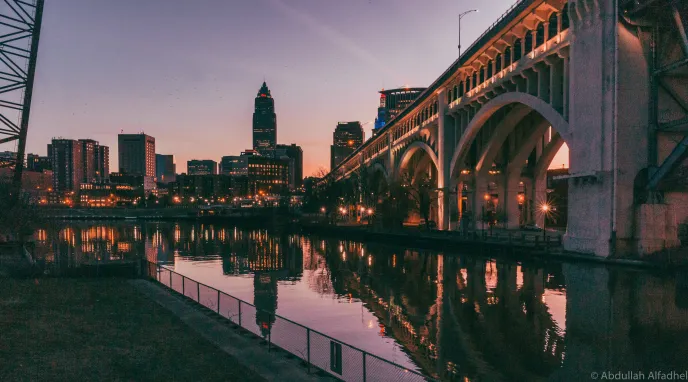Cleveland Divided: Rust Belt Revival. This fall, Ursuline College hosted an NEH-funded project about the issues of inequity in our place. They developed a Rust Belt course that students could complete by getting a humanities certificate. The program was created by community organizations and focused on bringing change through education. The students would learn how to solve current problems, which we need now more than ever.
Ursuline focuses on teaching young women to be independent and enterprising, which makes our school a perfect example of how to bridge the gap between academia and reality. Conversations centered around creativity often create bridges between political views, races, and socio-economics. Forbes ranked Ursuline as the top in the nation for its students with high mobility rates. Despite everything that divides classrooms at our school, we’ve found that conversations about creativity often bring people together.
While a history of adversity and struggle defines the Rust Belt, The Pathway seeks to understand how we can empower students with their narratives. All classes explore content, digital humanities, and community-based storytelling. We aim to equip students with the skills to take their knowledge and impact the world. With a focus on public humanities values, partnerships are essential for enabling students to stay engaged even during difficult times.
An illustrative example is a new English course that was created to meet the core requirements for literature class. It’s called: “From Rust Belt to Revival: Exploring the legacy of segregation, inequality, and social justice through the lens of the Anisfield-Wolf canon.” It got support from Cleveland’s Anisfield-Wolf Book Award and revolves around the idea that literature is a vehicle for change.
The annual ceremony brings eminent writers and scholars to the city to explore global and local essential themes such as race or identity. These topics are of particular significance in a rust belt city like Cleveland, which has been marred by its history of segregation and uneven decline.
Students read the novel while meeting authors and exploring the founder’s legacy; they featured global academic specialists in their course and versioned their work through digital humanities. Classes culminate in an exhibit for public consumption. This school year’s class focused on creating podcasts about varying topics in fields such as redlining.
The linked online courses span disciplinary boundaries. In digital photography classes, for example, capturing images is framed as an act of witnessing that helps students think critically about the developing history of their city and their role within it. In history courses, students learn how to collect oral histories by interviewing women leaders in Cleveland and carrying out evidence-based ethical assessments.
Throughout the semester, they also assess social justice issues specific to Cleveland, including access to healthcare and environmental racism. In a biology course, please take part in collaborative learning with one another while discussing how people are part of the problem when it comes to environmental issues such as water pollution in Lake Erie. Our historic preservation department will demonstrate to students how you can tell compelling stories about place and space through architecture.
The standard core course “Identity, Diversity and Community” covers issues of equity- including local manifestations that include redlining food access or health care- and will allow students to explore essential topics such as identity or prejudice.
Our course materials and multimedia deliverables, such as photographs, digital interview files, infographics, and podcasts, are stored in a database. The database on our website is called the “Rust Belt Repository.” It can be integrated with classrooms for digital exhibitions or future initiatives.
A holistic education and an appreciation for the environment are necessary components to providing transformative education. The city’s (Cleveland) long-standing system of redlining still needs to be solved, while our region finds it more difficult than ever to tell its story properly.
The newspaper industry is changing rapidly in North America; major newspapers are shutting down to have their content spread digitally. With so many challenges our city faces, we believe locally-powered storytelling is the key to navigating these turbulent waters and moving towards a brighter future.










